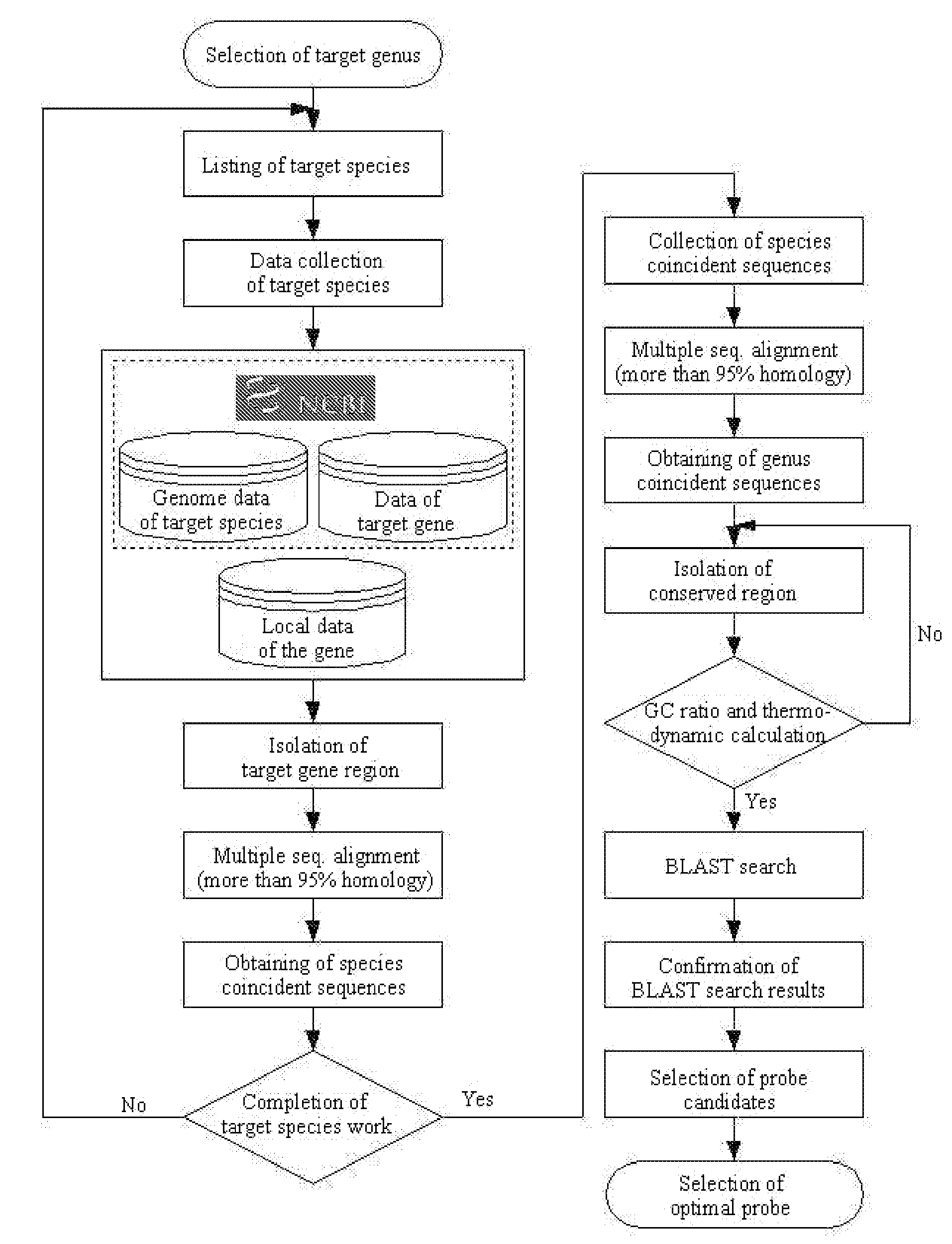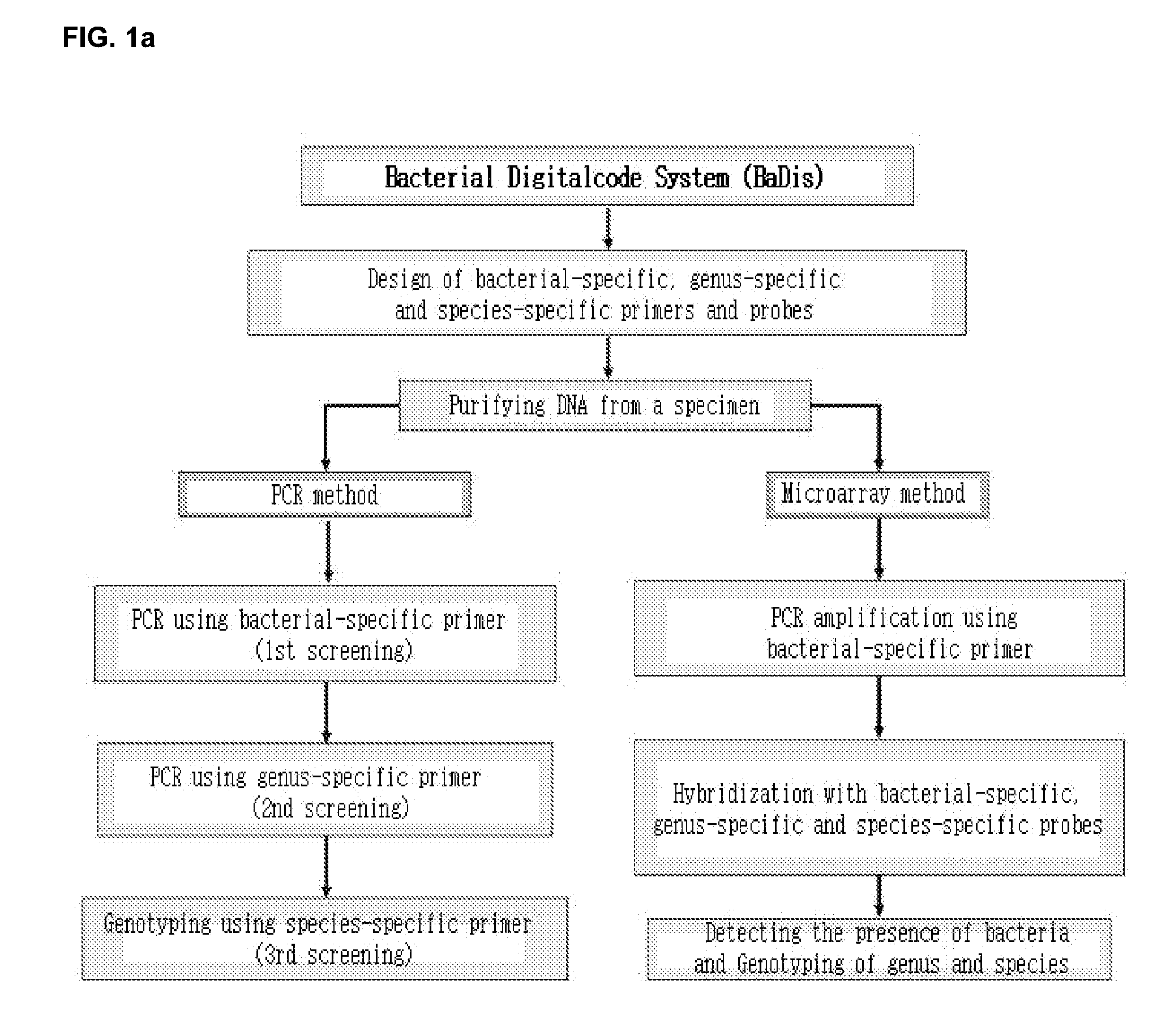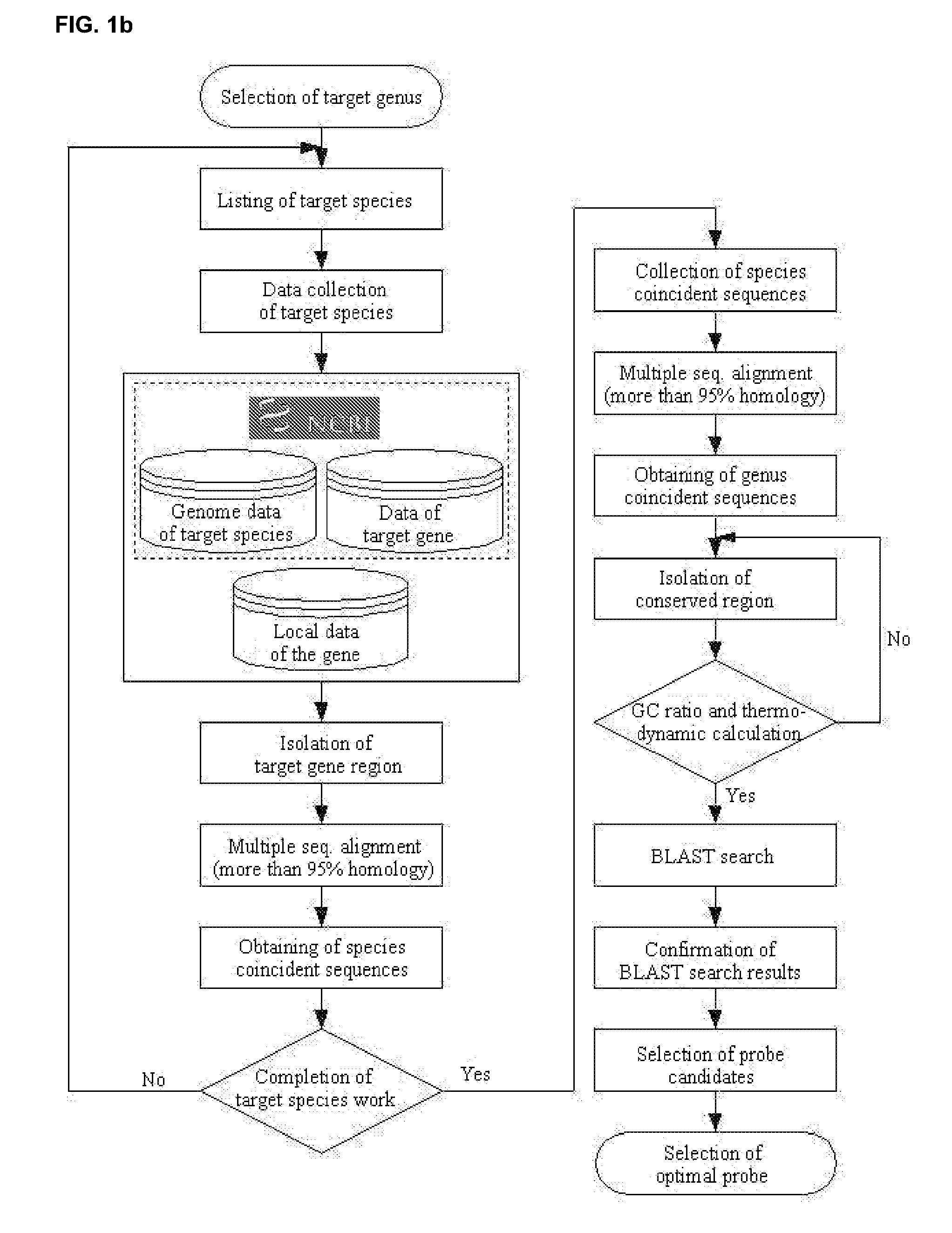Oligonucleotide for Detection of a Microorganism, Diagnostic Kits and Methods for Detection of Microorganisms Using the Oligonucleotide
a technology of oligonucleotide and microorganism, which is applied in the field of oligonucleotide diagnostic kits and methods for detection of microorganisms using oligonucleotide, can solve the problems of difficult analytic procedures and complicated manipulations, unable to catch minor microorganisms, and long time-consuming for conventional cell culture methods and biochemical methods to identify bacteria
- Summary
- Abstract
- Description
- Claims
- Application Information
AI Technical Summary
Benefits of technology
Problems solved by technology
Method used
Image
Examples
example 1
Cell Culture and Separation of Genome DNA
[0085]Approximately 100 kinds of microbial strains were purchased from American Type Culture Collection (ATCC, U.S.A) and Korean Collection for Type Cultures (KCTC, Korea). In order to cultivate each microbe, culture medium and condition were adjusted according to the manual recommended by ATCC and KCTC. Cell colonies were collected and injected into 1.5 ml tube. Then, 100 μl of InstaGene matrix (purchased from Bio-Rad, USA) was added and reacted with a water bath at 56° C. for 30 minutes. After stirring for 10 seconds, the resulting cells were heat-treated, stirred again for 10 minutes and centrifuged for 3 minutes at 12,000 rpm to collect a cell supernatant. For negative control groups, tertiary distilled water (referred to as “N” in FIGs), human DNA and viral DNA were utilized to standardize the amplification in following Examples.
[0086]Experimental strains used to analyze nucleotide sequences are summarized as follows.
TABLE 4ATCCNo.Genus ...
example 2
Construction of Primers for Microbial Diagnosis
1. Design of Bacterial-Specific Primers for Diagnosis of Microorganism
[0087]The primers of the present invention for detecting the presence of microorganism were designed on a basis of the multiple alignment and BLAST analysis in 23S rDNA nucleotide sequences of bacterium. The nucleotide sequence having the high homology with that of target microbe, but the low homology with those of other microorganism was determined to design primers of Table 2 corresponding to temporary SEQ NO: 38˜SEQ ID NO: 135. The bacterial-specific primers of the present invention are not limited within the nucleotide sequences of Table 2, but may be modified. Any probe containing the nucleotide sequences if not influencing the property can be designed.
2. Design of Bacterial Species-Specific Primers for Diagnosis of Microorganism
[0088]The species-specific primers of the present invention are not limited within the nucleotide sequences of Table 3, but may be modif...
example 3
Amplification of Target DNAs
[0093]In order to detect the presence of microorganism and identify each species of pathogen, DNA primers for the amplification were prepared as follows.
TABLE 5Temp.Strain NamePrimerSeq. No.Bacteria 389R42 459R46 469R48 471R49 520R54 991R641075R701906R901920R911941R931961R942069R992252R1052431R1152443R1172504R1202517R1222607R132Genus AeromonasAer-665F199Aer-1417R207Genus EnterococcusEntc-310F699Entc-909R701Geuus MycobacteriaMB-2089F875MB-3051R880Genus StreptococcusStr-791F1289Str-1595R1291
[0094]16S-1387F primer: primers for the detection of general microorganism designed on basis of 16S rDNA sequence already determined (Applied and Environmental Microbiology, 64(2): 795˜799, 1998).
[0095]The above-mentioned sets of primers were utilized to perform a PCR method in each genomic DNA of standard strain separated through the same procedure described in Example 1.
(1) Preparation of PCR Mixture (25 μl of Final Volume)
[0096]PCR mixture was prepared as follows: 100...
PUM
| Property | Measurement | Unit |
|---|---|---|
| Volume | aaaaa | aaaaa |
| pH | aaaaa | aaaaa |
| temperature | aaaaa | aaaaa |
Abstract
Description
Claims
Application Information
 Login to View More
Login to View More - R&D
- Intellectual Property
- Life Sciences
- Materials
- Tech Scout
- Unparalleled Data Quality
- Higher Quality Content
- 60% Fewer Hallucinations
Browse by: Latest US Patents, China's latest patents, Technical Efficacy Thesaurus, Application Domain, Technology Topic, Popular Technical Reports.
© 2025 PatSnap. All rights reserved.Legal|Privacy policy|Modern Slavery Act Transparency Statement|Sitemap|About US| Contact US: help@patsnap.com



